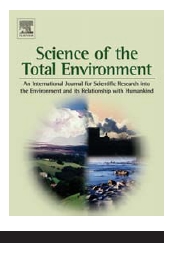
abstract
Anthropogenic effects in bothOsaka and Bangkokwere evaluated to compare the relationships between subsurface environment and the development stage of both cities. Subsurface thermal anomalies due to heat island effects were found in both cities. The SurfaceWarming Index (SWI), the departure depth from the steady geothermal gradient, was used as an indicator of the heat island effect. SWI increases (deeper) with the magnitude of heat island effect and the elapsed time starting from the surface warming. Distributions of subsurface thermal anomalies due to the heat island effect agreed well with the distribution of changes in air temperature due to the same process, which is described by the distribution of population density in both Osaka and Bangkok. Different time lags between groundwater depression and subsidence in the two cities was found. This is attributed to differences in hydrogeologic characters, such as porosity and hydraulic conductivity.We find that differences in subsurface degradations in Osaka and Bangkok, including subsurface thermal anomalies, groundwater depression, and land subsidence, depends on the difference of the development stage of urbanization and hydrogeological characters.
available at www.sciencedirect.com
www.elsevier.com/locate/scitotenv


































